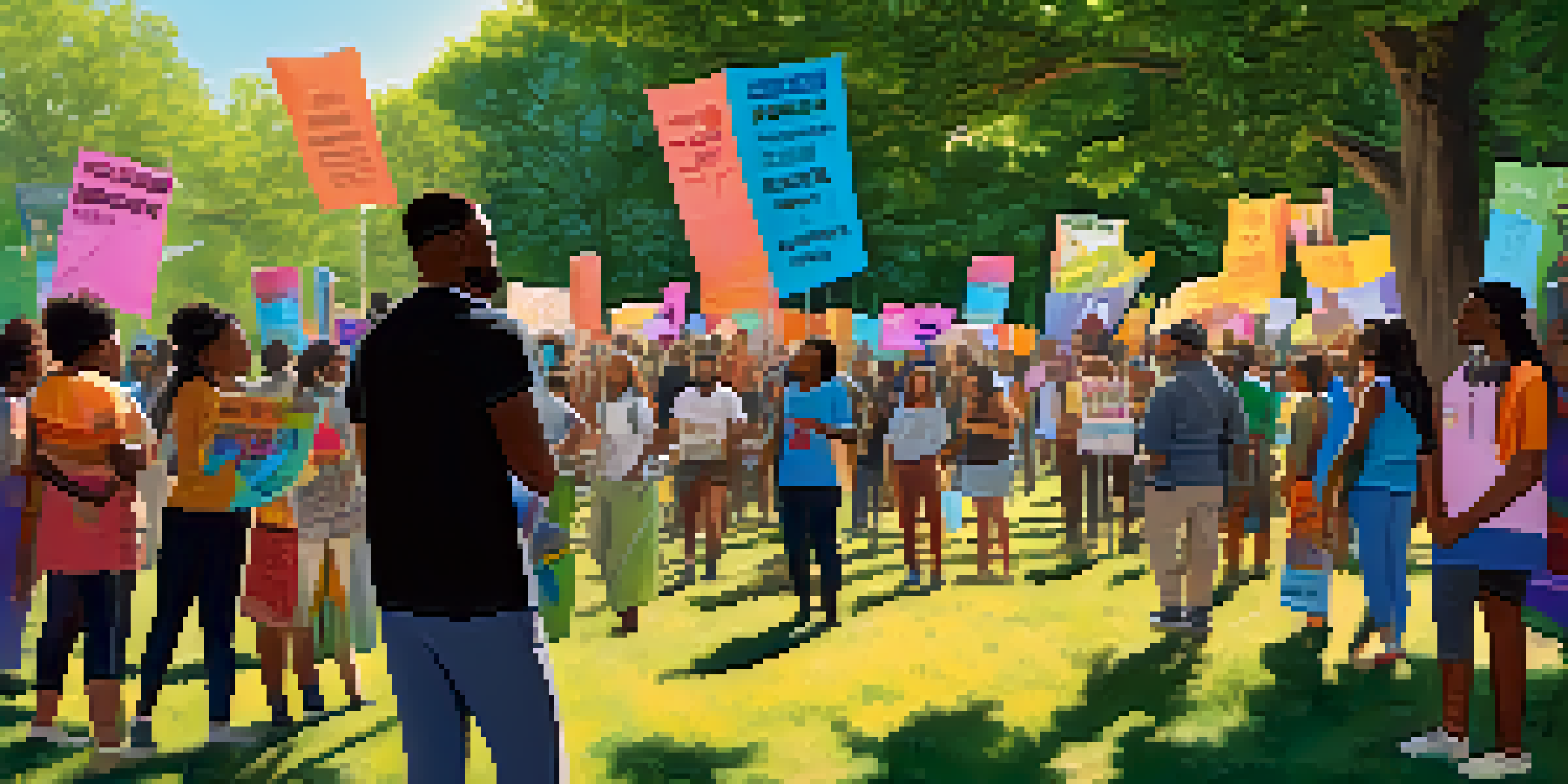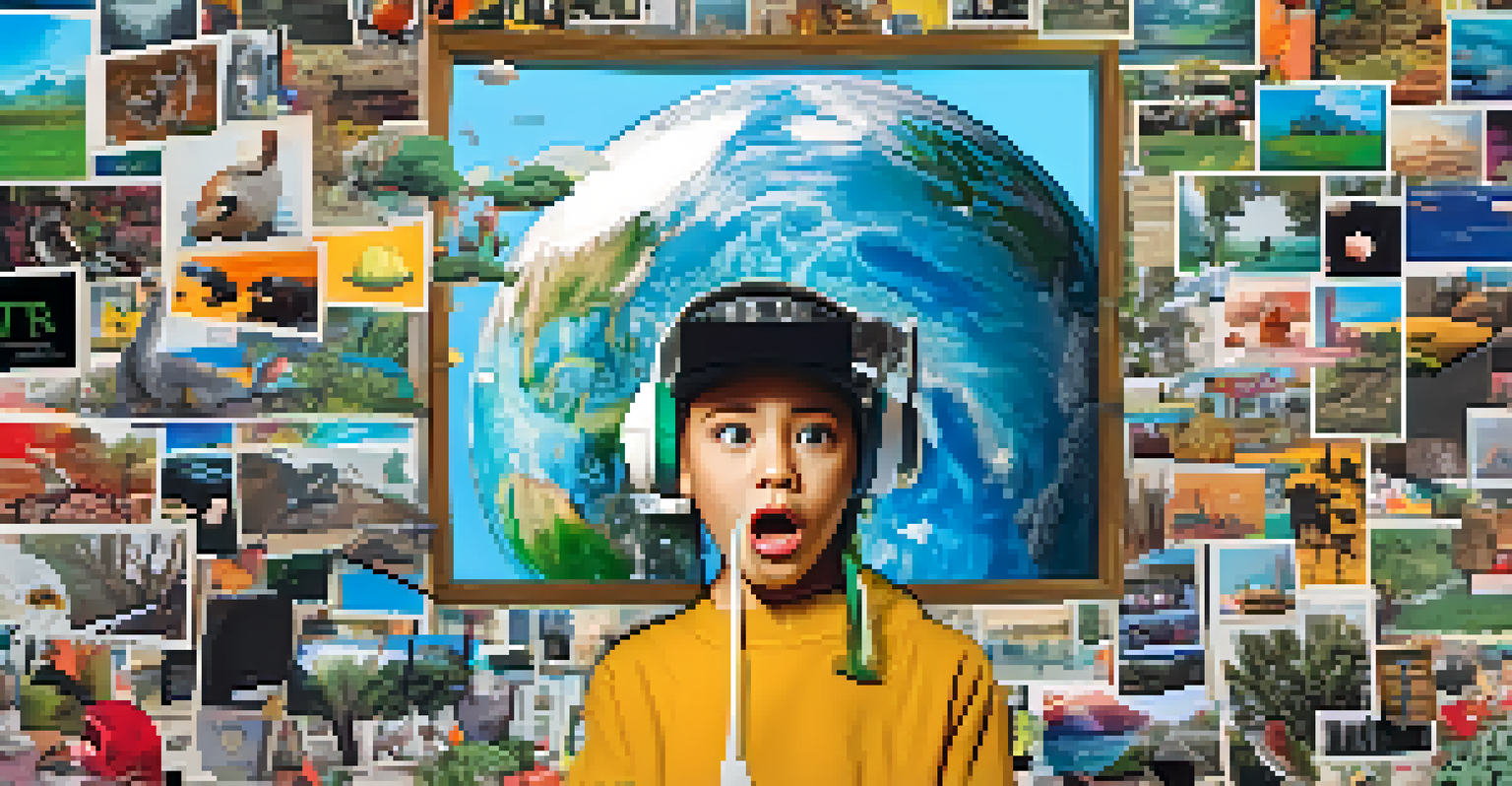Digital Art and Activism: New Frontiers in Political Expression

The Rise of Digital Art in Activism
In recent years, digital art has emerged as a powerful tool for activism. Artists harness technology to create impactful visuals that resonate with audiences worldwide. This shift has democratized art-making, allowing voices from diverse backgrounds to be heard and amplified.
Art is a way of organizing one’s experience and giving it meaning. It’s also a way of voicing what you believe and fighting for it.
Digital platforms enable artists to reach vast audiences quickly, making their work more accessible than ever. Whether through social media campaigns or online galleries, artists can share their messages instantly, bypassing traditional gatekeepers. This immediacy helps to galvanize movements and foster community engagement.
Moreover, the adaptability of digital art allows creators to respond to current events in real-time. As social issues evolve, artists can create and disseminate relevant artwork that reflects the urgency of the moment, keeping the dialogue alive and relevant.
Social Media: A Canvas for Change
Social media platforms have become essential canvases for digital artists and activists. With millions of users worldwide, these platforms allow for rapid content sharing and interaction. Artists can post their work, engage with audiences, and even collaborate with other creators to amplify their messages.

The viral nature of social media means that impactful pieces can reach global audiences almost overnight. For instance, artwork related to movements like Black Lives Matter or climate change has gained traction, often sparking discussions that lead to real-world action. This interconnectedness fosters a sense of solidarity and encourages collective action.
Digital Art Empowers Activism
Artists leverage technology to create impactful visuals that amplify diverse voices in social movements.
In this way, social media not only showcases art but also serves as a vital space for activism. It enables marginalized voices to be heard, challenging norms and pushing for social change through compelling visual narratives.
New Genres of Digital Activism
Digital art has birthed new genres of activism, including meme culture and video art. Memes, often humorous and relatable, can spread complex messages quickly, making serious issues more digestible for a broad audience. They serve as a modern form of protest, cleverly blending art with social commentary.
Digital art is a catalyst for social change, allowing artists to reach and resonate with audiences in ways that traditional mediums may not.
Video art, on the other hand, provides a dynamic medium for storytelling. Artists can combine visuals, sound, and narrative to evoke emotions and provoke thought. This engaging format allows for deeper exploration of issues, making it easier for viewers to connect with the message.
These genres reflect the versatility and creativity of digital activism, showing that there are many ways to engage audiences and promote social justice. As technology evolves, so too does the potential for innovative forms of expression.
Challenges Facing Digital Activists
Despite its advantages, digital activism is not without challenges. Censorship remains a significant issue, as platforms may remove content deemed inappropriate or controversial. This can stifle creativity and limit artists' ability to express their views freely.
Additionally, the fast-paced nature of digital media can lead to oversaturation. With so much content available, important messages can become lost in the noise. Activists must continually find new ways to capture attention and maintain engagement without compromising their core message.
Social Media Fuels Engagement
Platforms like social media serve as essential spaces where art and activism intersect, fostering global dialogue and collective action.
Moreover, the digital divide means that not everyone has equal access to these platforms. Disparities in internet access and digital literacy can hinder participation from certain communities, making it crucial for activists to consider inclusivity in their strategies.
The Role of NFTs in Activism
Non-fungible tokens (NFTs) have revolutionized the art world, providing a unique opportunity for digital activists. By tokenizing their work, artists can ensure that their creations are not only owned but also valued in a new way. This can lead to financial support for causes and movements, creating a direct link between art and activism.
NFTs also allow for the creation of limited edition pieces that can raise funds for charities or initiatives. Artists can donate a portion of their sales to causes they believe in, merging creativity with philanthropy. This innovative approach encourages a sense of community among supporters and fosters deeper connections to the issues at hand.
However, the environmental impact of NFTs has sparked debate. Activists must navigate these concerns carefully, balancing the benefits of financial support with the potential harm to the planet. As this medium evolves, finding sustainable practices will be crucial for integrating NFTs into the activist landscape.
Collaborative Projects and Initiatives
Collaboration is at the heart of digital art and activism, with many artists joining forces to create impactful projects. These partnerships can amplify voices and bring together diverse perspectives, fostering a richer dialogue around social issues. Collective efforts often lead to more comprehensive campaigns that engage larger audiences.
Initiatives like online art exhibitions and community-driven projects highlight the power of collaboration. Artists can showcase their work alongside activists and organizations, creating a multidimensional approach to advocacy. This synergy not only enhances visibility but also fosters a sense of community among participants.
Collaboration Enhances Impact
Collaborative projects among artists and activists create richer narratives and broader outreach for social justice initiatives.
Moreover, collaborative projects can bridge gaps between different mediums and disciplines. By combining visual art with music, poetry, and performance, activists can create immersive experiences that resonate on multiple levels, making their messages even more compelling.
The Future of Digital Art and Activism
As technology continues to evolve, so too does the landscape of digital art and activism. Emerging technologies, such as augmented reality (AR) and virtual reality (VR), offer exciting new possibilities for expression and engagement. These tools can create immersive experiences that transport viewers into the heart of social issues, fostering empathy and understanding.
The future also holds promise for greater accessibility and inclusivity in digital activism. As more people gain access to technology and the internet, a broader range of voices can contribute to the conversation. This diversity will enrich the artistic landscape and lead to more innovative approaches to activism.

Ultimately, the integration of digital art in activism represents a new frontier in political expression. By harnessing technology and creativity, artists can spark conversations, inspire change, and connect communities in ways that were once unimaginable.